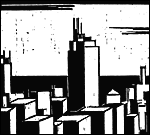John Gregory Dunne, The Studio (Farrar, Straus & Giroux, 1969) Reissued in paperback in 1999 by Vintage Journalist, screenwriter, critic, novelist: John Gregory Dunne was first a journalist. To write The Studio, his first book, he spent a year as the resident fly-on-the-wall at the institution formally known as The Twentieth Century Fox Film Corporation, still commandeered (even at this late date as the old Hollywood was crumbling) by the imperious Darryl Zanuck. "What I hoped to find at the end of that year was something of the state of mind called Hollywood," Dunne, the husband of Joan Didion and the brother of Dominick Dunne, explains early on. The Studio is routinely cited as a classic among books about Hollywood for its comprehensive portrait of the studio system during a studio-skeptic age. From 1958 to 1962, Fox had lost $88.3 million but as the book opens, and The Sound of Music had just raked in $100 million, the largest gross for a movie at the time, the studio was on a roll again. Numbers so surreally dramatic as that (for that time) may have prompted Dunne to write about Fox, but he also felt compelled to record how Hollywood functions "at a considerable remove from the rest of the society," how it "lives and thrives on its own myths." The movies that garner most of Dunne's attention in the year he spent at Fox – the Julie Andrews movie Star!, Dr. Dolittle, and The Boston Strangler – provide ample corroboration. But journalists will benefit as much from the valuable history The Studio provides as the literary and journalistic lessons it imparts. Dunne seems to flit from department to department within the studio, leaving the impression of a 360 degree eye permeating all. The studio appears to be a living entity because of Dunne's descriptions: The studio's publicity department, for example, "began to resemble an isolated country convent getting ready for the annual visit of the auxiliary bishop" as it planned a convention for the studio's foreign distributors and publicity people. MORE: Interview with Dunne by George Plimpton, from the Spring 1996 issue of The Paris Review 1994 profile of Dunne from the Chicago Tribune, published after Dunne’s Hollywood novel Playland had been published March 2, 1987 profile from the Houston Chronicle by Elizabeth Venant of Didion and Dunne |
 |
|||||||||||||||||||||||||||